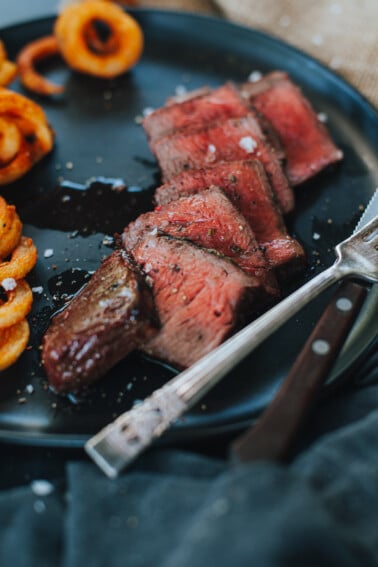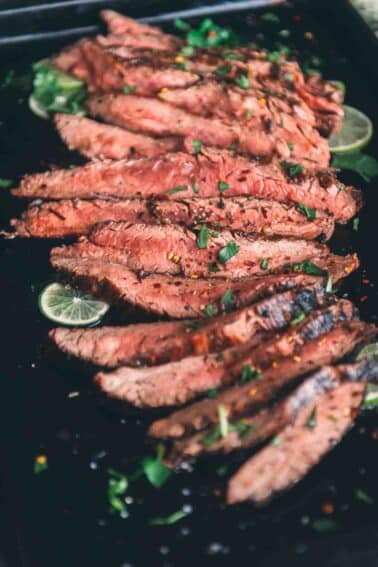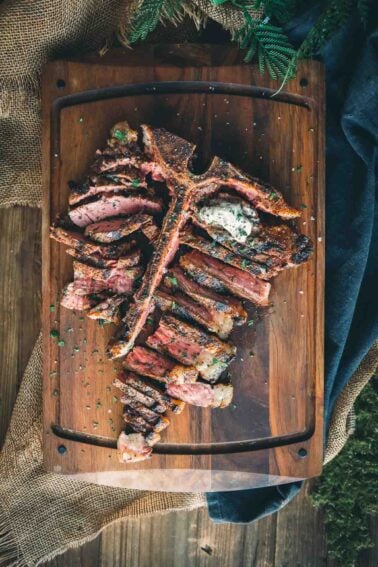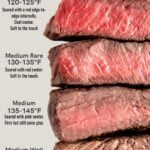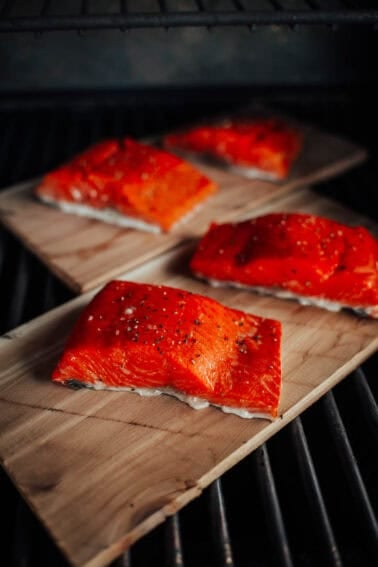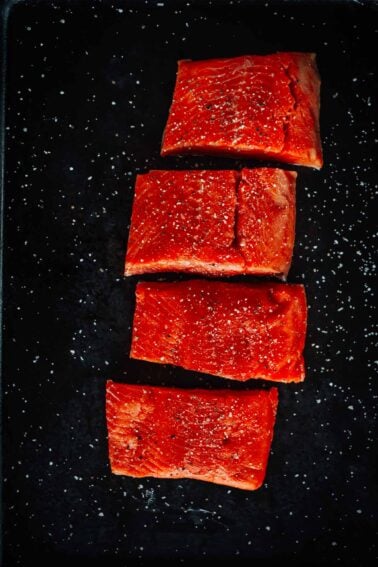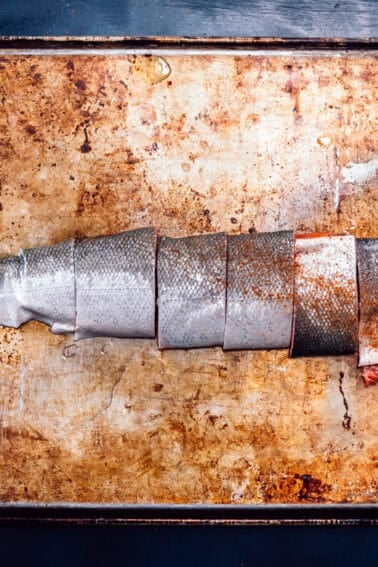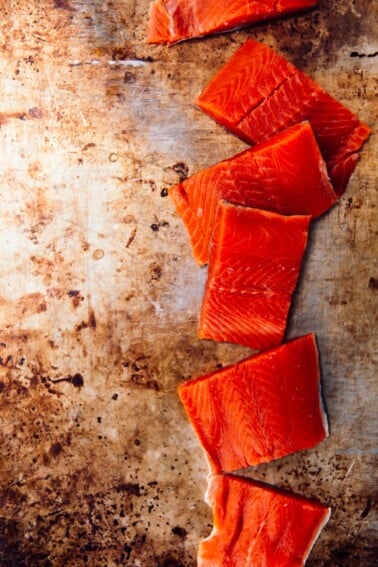Tired of playing guessing games with your steak’s doneness? Say goodbye to cut-and-peek and hello to perfectly cooked steaks every time with our foolproof temperature guide.
Listen up, steak lovers – this is the guide you’ve been waiting for. As bonafide steak experts of over 10 years, we’ve grilled, seared, and smoked our way through 1,000’s cuts to bring you the ultimate temperature cheat sheet. From juicy medium-rare or a well-done steak that’s still tender, we’ve nailed down the exact temps for steak perfection. No more guesswork, no more disappointment.
Steak temperature chart
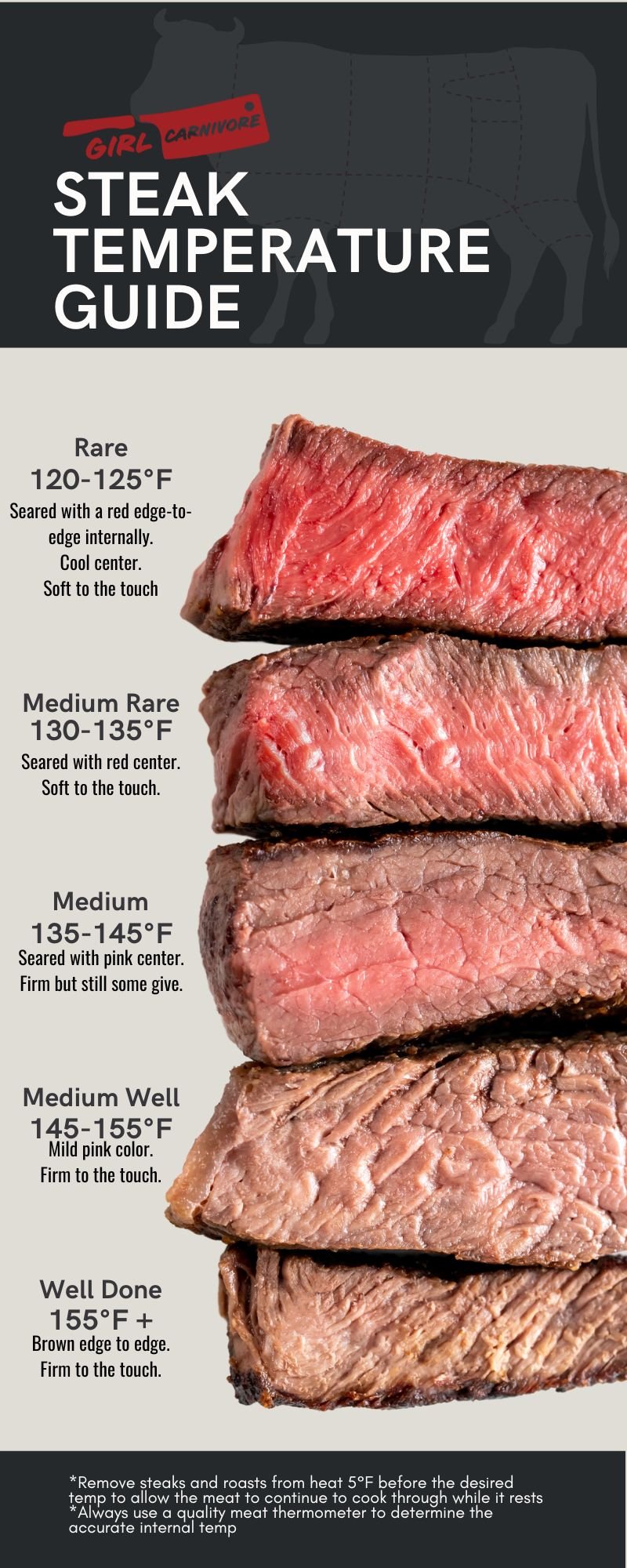
Steak Internal Temp by Steak Doneness
The most accurate way to measure the internal temperature of a steak is to use an instant-read thermometer. While the steak is cooking, insert the meat thermometer through the side into the center of your steak. Make sure the tip of the thermometer is surrounded by meat. If it touches bone, gristle or fat, the temperature can be skewed.
Some experienced chefs can tell a steak’s doneness by feeling it. If you press on the steak, the proteins will be looser, the rarer it is. As it cooks, the steak will become firm. But this method isn’t failproof and different steaks have different textures. Filet mignon is naturally more tender than a tri-tip steak. We recommend always using a thermometer.
Blue steak temperature
- Temperature: 115-120 F
- Color: Bluish-red inside with a quick thin sear outside
- Tenderness: Can be chewy depending on the cut
Rare Steak Temp
- Temperature: 120-125 F
- Color: Bright red center with slight char on the outside
- Tenderness: Very soft
Medium Rare Temp
- Temperature: 130-135 F
- Color: Warm red center with more browning on the edges
- Tenderness: Evenly soft and tender
Medium Steak Temp
- Temperature: 135-145 F
- Color: Light pink center with a thicker ring of brown
- Tenderness: Soft in the center with firm edges
Medium Well Steak Temp
- Temperature: 145-155 F
- Color: Light brown with a touch of pink in center
- Tenderness: Stiff
Well Done Steak Temp
- Temperature: 155 F plus
- Color: Brown all the way through
- Tenderness: Firm and chewy
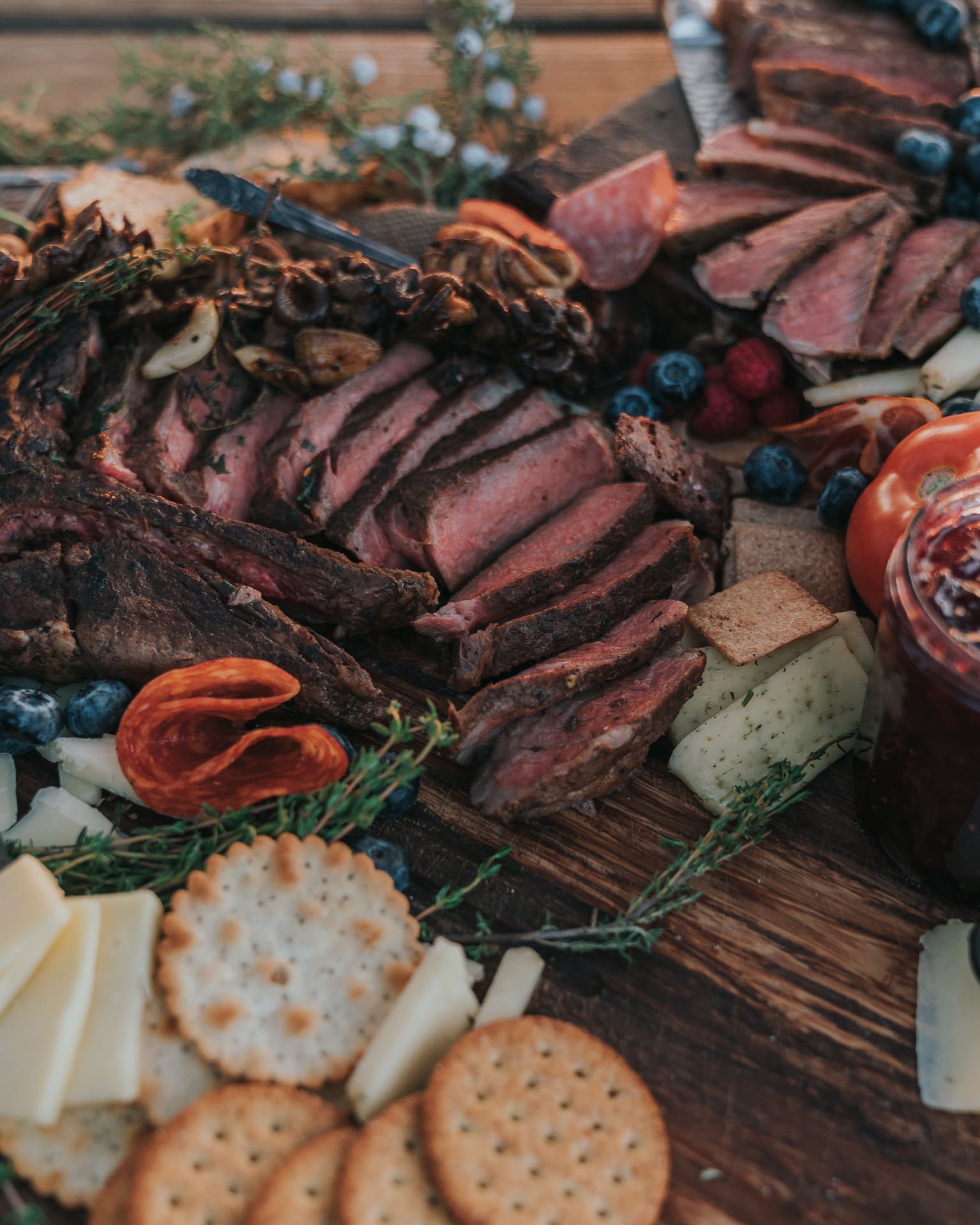
Table of Contents
- Steak temperature chart
- Steak Internal Temp by Steak Doneness
- Blue steak temperature
- Rare Steak Temp
- Medium Rare Temp
- Medium Steak Temp
- Medium Well Steak Temp
- Well Done Steak Temp
- Steak Temps Guide: Everything you will learn
- Resting and carryover cooking
- HOW TO USE A MEAT THERMOMETER
- What Cooking Does To Your Steak
- Our most popular Steak Recipes
- Save This Recipe ✉️
- Medium-Rare Steak Recipe Recipe
- USDA safety considerations
- Steak Temps FAQs
When it comes to a perfectly cooked steak, there are several factors that come into play. The heat of the cooking surface, the starting temperature of the steak, your desired finished doneness, the thickness of the steak, and the environment.
These all play a crucial role in cooking exactly the way you like it, no matter the type of steak. A thicker steak needs more time to reach medium rare than a thin cut. And a steak recipe being grilled over a fire in the rain may take longer than one in the convection heat of an oven. It’s important to understand how these things can all make or break your delicious meal.
Steak Temps Guide: Everything you will learn
This article covers:
- Achieving precise steak doneness, from medium-rare to well-done.
- Understanding key factors influencing cooking outcomes.
- Temperature ranges and descriptions for each doneness level.
- Effective use of a meat thermometer for accurate results.
- The science behind cooking steaks and resting importance.
- The long and short of it is, use a digital thermometer.
Have you ever wondered how to achieve that perfect juicy, tender, and flavorful steak? No, it’s not all in the steak marinade. It really comes down to temperature, no matter if you’re grilling, searing on the range top, or sous vide cooking. With this guide, the next time you grill a steak on a gas grill or a charcoal grill, or get that edge-to-edge crust when you learn how to sear a steak, your big cut of beef will turn out perfectly.
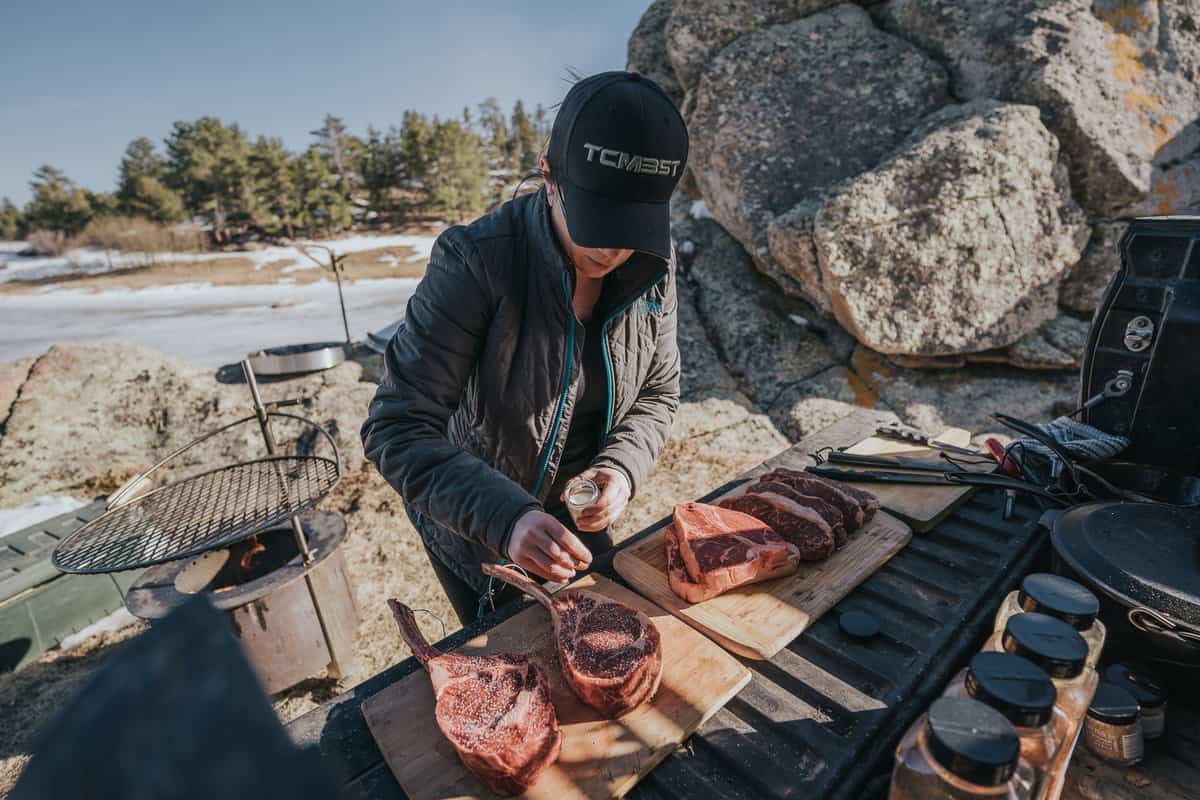
Resting and carryover cooking
We’ve all been there, slicing into a perfectly cooked steak salivating like Pavlov’s dogs just to find it’s over cooked…. Resting and carryover cooking are crucial steps in achieving a perfectly cooked steak. When you take the steak from the heat, it’s important to know that the residual heat trapped within the steak will cause it to continue to cook 5 to 10 degrees. This phenomenon is known as carryover cooking.
To ensure your steak reaches your preferred level of doneness, we suggest taking it off the heat a few degrees before it reaches that temperature. For example, if we want a medium rare steak, we will take meat off of the heat 5 degrees below what our ideal temperature will be after the rest time.
This anticipates the extra cooking that will occur due to carryover heat, preventing your steak from overshooting your desired doneness with its final temperature. This technique accounts for the heat transfer within the tender steak and helps you achieve a consistent and precise outcome, be it rare, medium-rare, or any other level of doneness.
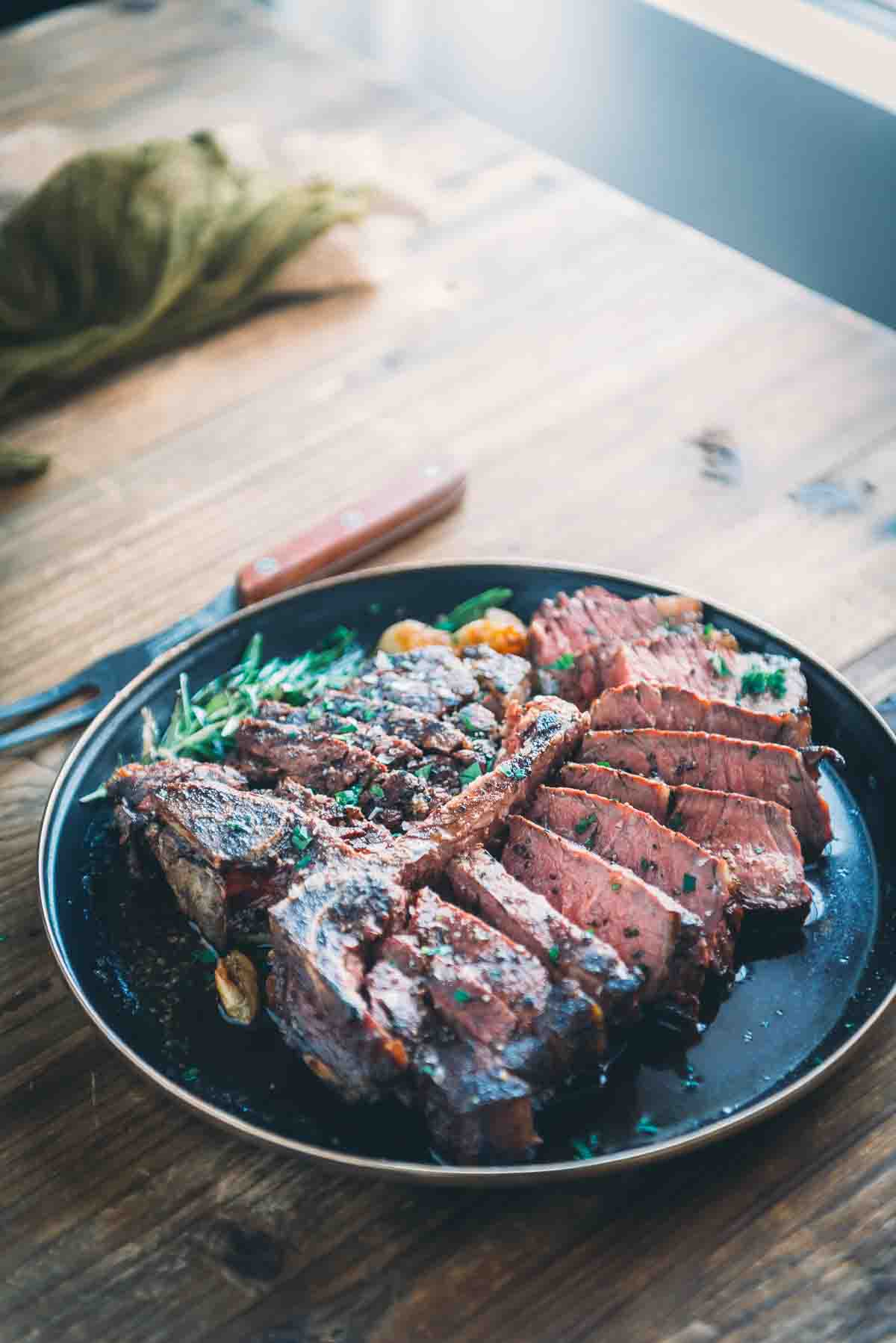
HOW TO USE A MEAT THERMOMETER
Knowing where to probe the meat is just as important as taking the temp:
- Insert: Insert the thermometer’s probe into the thickest part of the steak, avoiding bone or fat.
- Wait for Stable Reading: Wait a few seconds for the temperature reading to stabilize. Ensure the probe tip is in the center of the meat for accurate results.
- Check Temperature: Read the temperature on the display. Different meats have different target temperatures for doneness. Check our steak temperatures chart to master the perfect cook.
- Remove and Clean: Clean the thermometer probe between uses, especially when switching between different types of meats, to prevent cross-contamination.
- Rest the Meat: After checking the temperature, let the meat rest before slicing. This allows the juices to redistribute, resulting in a juicy and flavorful dish. Remember, carryover cooking will happen as the steak rests. Expect the steak doneness level to rise another 5 to 10 degrees while you wait to slice into it.
Curious about what our favorite grills, tools, and spices are? Be sure to check out our shop page.
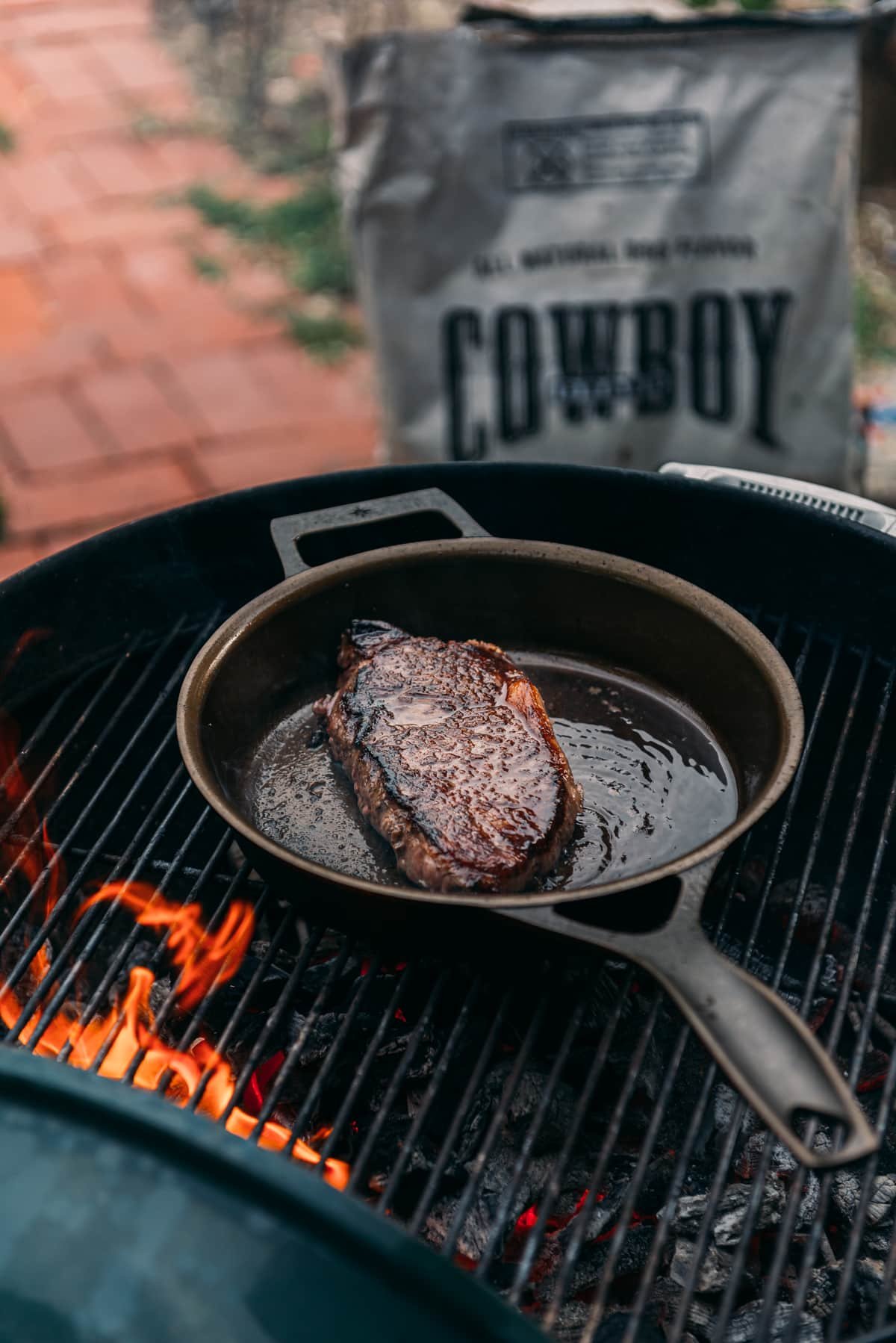
What Cooking Does To Your Steak
Cooking a steak is more than just applying heat to the meat; it’s an art and science, that transforms a raw piece of beef into a delectable and tender delicacy. Understanding what happens during the cooking process can help you perfect your steak-cooking skills and achieve the desired flavors, textures, and juiciness.
- Maillard Reaction: Unlocking Flavor Profiles
The Maillard reaction is a chemical reaction that occurs when proteins and sugars are exposed to high heat. This process results in the delicious browning and caramelization on the surface of your steak, creating complex flavor compounds that enhance its taste. As you cook your steak, amino acids react with reducing sugars through this reaction, releasing aromas and adding depth to its flavor profile and creating that perfect crust, sear, or grill marks that are amazing to slice through. - Tenderizing via Heat: Breaking Down Collagen
Heat plays a crucial role in breaking down collagen present in tougher cuts of meat like chuck eye steaks or flank steaks. As temperatures rise during cooking, collagen gradually converts into gelatin, making the meat more tender and easier to chew. This means, yes, some steaks are better cooked past medium-rare, resulting in melt-in-your-mouth tenderness. - Retaining Juiciness: Sealing in Moisture
When cooked correctly, even well-done steaks can retain their juiciness! Applying high heat initially helps form a flavorful crust while sealing the moisture within the steak by caramelizing its natural juices. Searing locks in these juices before completing the cooking process at lower temperatures for uniform doneness throughout without losing moisture content. Alternatively, for thicker cuts, like a 2 ” king cut porterhouse steak, the reverse sear method allows the steak to cook evenly through while finishing with a perfect cast iron sear. - Personalized Doneness Levels: Achieving Preferred Cooking Levels
Cooking a steak to your desired degree of doneness is crucial for ultimate enjoyment. Whether you prefer rare, medium-rare, medium, or well-done steaks, understanding cooking temps is critical for your personal satisfaction. - Resting Time: Allowing Flavors to Settle
After removing your perfectly cooked steak from heat, it’s essential to let it rest for several minutes before cutting into it – this step shouldn’t be overlooked! Resting allows time for internal temperature equalization and redistribution of juices throughout the meat, resulting in a more evenly cooked and flavorful steak. Additionally, this resting period helps retain juiciness by preventing immediate moisture loss when cutting into the steak. And its a great time to add another layer of flavor by adding a slice of compound butter atop the steak. This is a steakhouse trick for bathing the steak in an additional layer of rich umami flavor.
Although we love cooking campfire recipes, our favorite way to get a mouthwatering steak every time is using a seasoned cast iron pan. We love the edge-to-edge crust. Another great way to guarantee perfect results is the sous vide method. Neither of these may be as fun as live fire cooking, with the amazing aroma of real charcoal and smoking wood, but they produce results that wow consistently.

The next time you’re cooking steak, consider these tips and cook to your desired temperature. If you source great quality beef and don’t fall into a high-risk category, try cooking it to medium-rare for a flavorful steak that is guaranteed to be juicy and tender. Then practice your chef skills with a brandy peppercorn sauce or a Classic Béarnaise Sauce to finish
Our most popular Steak Recipes
Beef Recipes
Perfect Pan Seared Ribeye
Beef Recipes
Grilled Flank Steak
Beef Recipes
Grilled T-bone Steak
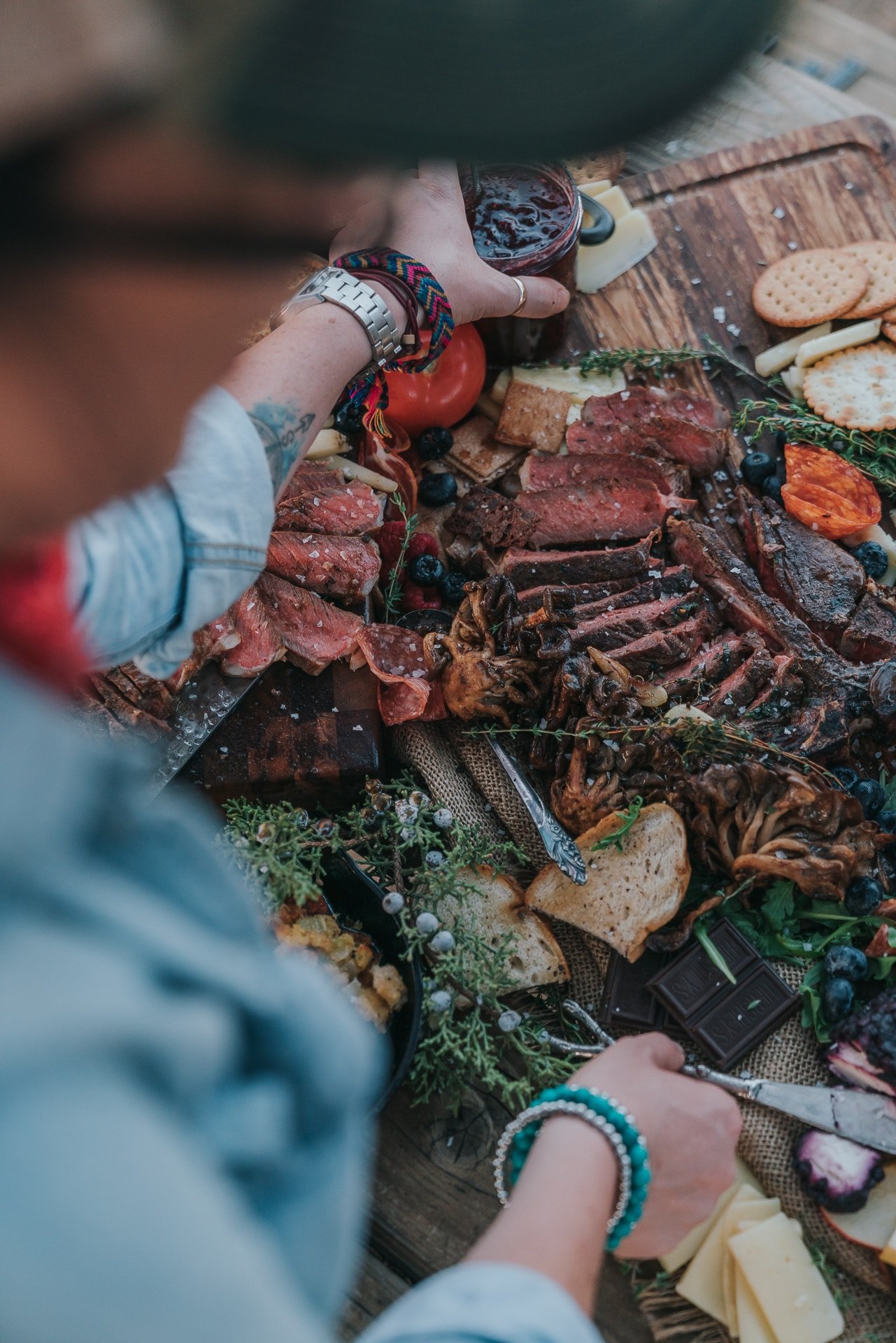
Medium-Rare Steak Recipe

Recommended Equipment
Ingredients
For the steak:
- 1 lb boneless steak about 1″ thick
- 1 tsp kosher salt
- 4 tbsp butter plus 1 tbsp of compound butter for resting
- 2 sprigs rosemary
- 2 garlic cloves smashed
For Garnish:
- freshly ground black pepper and flakey salt
Instructions
Prep the Steak
- Remove the steak from the package and pat it dry with paper towels.
- Season all sides liberally with kosher salt.
- Place the steak on a wire rack over a baking sheet and let dry brine in the fridge for 8 to 24 hours.
- When you remove the steak from the fridge, it should be a deep red color and very dry to the touch.
Sear the Steak
- When ready to cook, preheat a large cast iron pan over medium-high heat until just smoking.
- Add the dry steak to the skillet and do not touch it for 60 to 90 seconds.
- Gently flip the steak with tongs.
- Immediately add the butter over the steaks along with the smashed garlic and sprigs of fresh rosemary.
- As the butter melts, carefully tilt the pan just a bit and use a spoon to scoop up and ladle the butter over the the top of the steak.
- Cook it for 60 to 90 seconds longer until it reaches and internal temperature of 125 to 130 degrees F.
- Carefully remove the steak from the hot skillet and transfer to a cutting board or dish.
Rest and Serve
- Top the steak with a dollop of compound butter and a fresh rosemary sprig on top.
- Let the steak rest for 5 minutes as the butter melts over it before slicing against the grain into thin 1/4″ strips for serving. As the steak slices rest, they will start to bloom in color, becoming more red.
- Garnish with a pinch of freshly ground black pepper and flakey salt and and serve immediately.
Notes
Nutrition
Bookmark this recipe now!
USDA safety considerations
Before breaking down different steak doneness levels, it’s important to consider the USDA recommended temperature for cooked steak.
They advise cooking raw beef, including steak, to an internal target temperature of 145 F with a minimum 3 minute resting period. This is considered the safe minimal internal temperature to prevent foodborne illness. They also recommend using a digital thermometer to get the most accurate temperature reading.
Restaurants around the U.S. offer steaks cooked below 145 degrees F. To do so, the FDA requires them to include a consumer advisory statement on their menus about the risks of eating raw or undercooked items.
Diners who are very young, elderly, pregnant, or have compromised immune systems are most at risk if steaks are prepared below that temperature.
If you’re concerned about going below that temperature or you fall into the high-risk category, you can also obtain great tenderness, juiciness, and flavor by cooking beef that’s graded USDA prime. Check the labels to know what you’re buying. Certain cattle breeds like Angus and Wagyu are also known for more marbling and better tenderness.
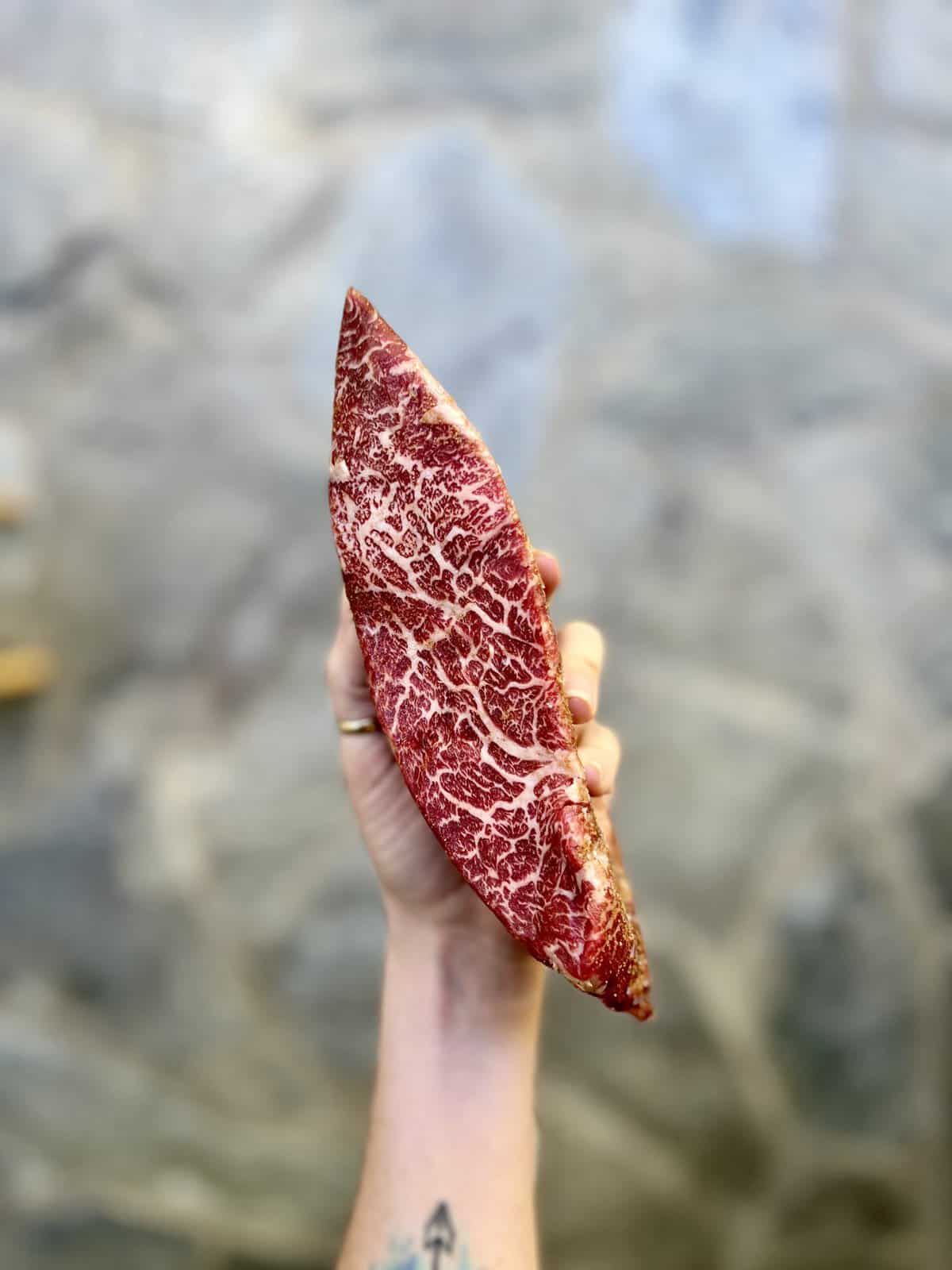
So why do restaurants offer steaks cooked below what the USDA recommends?
Because steaks cooked to medium-rare or rare have a more enjoyable mouthfeel, taste, and texture for many diners. Plus, the restaurants are confident in the safety protocols followed while sourcing their meat.
If you plan to cook your steak at home below the USDA recommended temperature of 145 F, be sure to choose beef from a quality meat source. Not sure where to buy meat, we have a full list of trusted sources we use when we buy meat online.
Cooking a steak to rare means that the internal temperature reaches around 125 F, which is below the USDA-recommended safe minimum internal temperature of 145 F for beef. While the risk of harmful bacteria is reduced at higher temperatures, the safety of rare steak depends on factors like the source of the meat, handling, and cooking methods.
Then, all that’s left for juicy steak is to season it with a good steak rub and cook it in a skillet or on a grill or griddle.
Now that you’ve mastered cooking steak learn how to grill the perfect burger on a gas, charcoal or pellet grill.

Steak Temps FAQs
Insert the thermometer probe into the thickest part of the meat without touching bone, fat, or the cooking surface for an accurate reading.
Rare steak has a cool center, medium-rare is warm and slightly pink, while well-done steak is fully cooked with no pink. A meat thermometer helps you achieve your desired doneness.
For the most accurate reading, insert the thermometer probe from the side of the steak to the center.
Cooking times vary based on factors like steak thickness, how you cook your steak, and pan or grill temperature. A meat thermometer provides accurate results, helping you avoid overcooking.
No. The red color comes from a pigment called myoglobin, which is a protein found in muscle tissue that helps deliver oxygen to the muscles. Raw beef appears red because the myoglobin is in its natural state. When heat is introduced to the meat, the myoglobin undergoes a chemical change.
Parts of this article were originally written by Christie Vanover of GirlsCanGrill.com. This article originally appeared on Food Drink Life.
